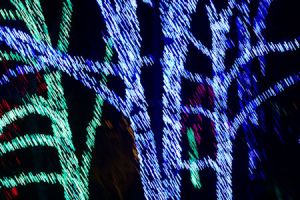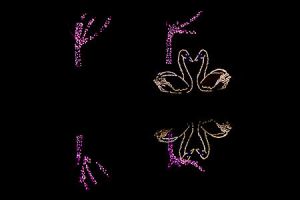Tips for Creating Memorable Photos of Nighttime Holiday Scenes

Take advantage of the nighttime Holiday Themed safaris that WPS has scheduled during the month of December and try some (or all!) of these tips!
- Use a sturdy Tripod to hold the camera steady during long exposures
- Use a remote release or the self-timer so there is no “camera shake” when the shutter is released.
- Use a low ISO to reduce “digital noise”.
- In general, a minimum f-stop of f/8 is recommended, depending on the depth of field desired in the photo. A photo that has sharpness from the foreground to the background usually has an f-stop of f/8 or higher, while a photo that has a blurred background has an f-stop of f/7.1 or lower.
- The shutter speed will depend the f-stop used – a larger f-stop (smaller number) will require a faster shutter speed to limit the amount of light, while a smaller f-stop (larger number) will require a slower shutter speed to let more light in.
- Bracket your exposures – set the f/stop and then photograph the scene using different shutter speeds. Review the shots to ensure that you have taken one that is close to what you see in front of you, in terms of color. For instance, yellow lights should look yellow, not white (over-exposed) or orange (under-exposed).
- Practice some of these special effects:
- To create “starbursts” on points of light in the photo, use an f-stop of f/11 or smaller. The number of “rays” in the starburst will depend on the number of blades that are used in the lens aperture diaphragm, and the smaller the aperture, the more pronounced the starburst effect.

- To create “starbursts” on points of light in the photo, use an f-stop of f/11 or smaller. The number of “rays” in the starburst will depend on the number of blades that are used in the lens aperture diaphragm, and the smaller the aperture, the more pronounced the starburst effect.
f/16, 6 seconds, ISO400
-
- Zooming in or out during the exposure: (Note: You need to use a zoom lens to do this!) Use a small f-stop and a shutter speed of several seconds. Start the exposure, and after one or more seconds, slowly and evenly turn the barrel of the lens, then let exposure complete.

- Zooming in or out during the exposure: (Note: You need to use a zoom lens to do this!) Use a small f-stop and a shutter speed of several seconds. Start the exposure, and after one or more seconds, slowly and evenly turn the barrel of the lens, then let exposure complete.
f/18, 10 seconds, ISO 200
-
- Move the camera up or down during the exposure to create an abstract effect.

- Move the camera up or down during the exposure to create an abstract effect.
f/7.1, 1.3 seconds, ISO 200
-
- Find a reflection, in a body of water or a window to create a “mirror image”.

- Find a reflection, in a body of water or a window to create a “mirror image”.
f/8, 2 seconds, ISO 200
-
- Have fun trying these techniques and be sure to send your favorites to WPS – we’d love to see them!
